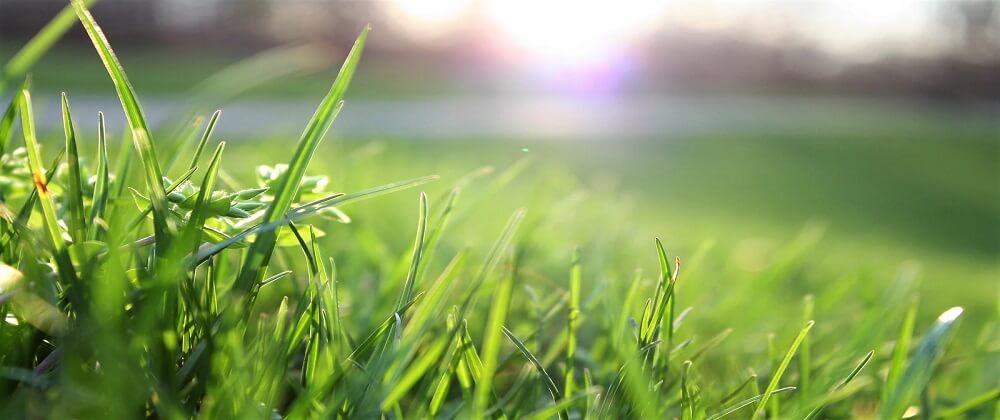
Choosing the Best Grass Seed for Sandy Soil: Ultimate Guide
By: ROS Team
Selecting the right grass for sandy soil is of utmost importance as it greatly influences the health and appearance of your turf. When faced with sandy soil, this decision becomes even more critical due to the unique challenges and advantages associated with this soil type.
Sandy soil boasts excellent drainage capabilities but struggles with water retention and nutrient availability.
In this guide, we will delve into the intricacies of sandy soil and explore key factors that should shape your choice of grass seed.
Understanding Sandy Soil
Sandy soil possesses a distinctive texture and composition, presenting both challenges and opportunities for grass cultivation. This type of soil consists of larger particles, resulting in a gritty and loose feel. Despite its excellent drainage and warmth, sandy soil also has certain limitations to consider.
1. Drainage
One of the notable strengths of sandy soil is its exceptional drainage capability. Rainwater and irrigation can quickly permeate through the soil, preventing waterlogging and reducing the risk of root rot.
However, this rapid drainage can also wash away water and nutrients before plants can fully absorb them.
2. Water-Holding Capacity
Despite its ability to drain water swiftly, sandy soil struggles with water retention. The larger particles create gaps that don’t hold water well, which can pose challenges during dry periods.
As a result, maintaining consistent moisture levels for grass growth becomes a key consideration.
3. Nutrient Retention
Sandy soil has a limited capacity to retain nutrients. The larger spaces between particles allow nutrients to leach away with irrigation or rainfall.
This deficiency can lead to nutrient deficiencies in plants unless proper care and amendments are implemented.
4. Aeration
The loose structure of sandy soil promotes excellent aeration, allowing roots to breathe easily. This can enhance root development and overall plant health.
5. Soil Erosion
Sandy soil is more susceptible to erosion due to its loose texture. Wind and water can carry away the top layer of soil, potentially exposing roots and affecting the stability of the lawn.
6. Warmth
Sandy soil tends to warm up quickly in the spring, promoting early growth. This can be advantageous for grass establishment and growth in cooler climates.
Factors to Consider When Choosing Grass Seed for Sandy Soil
Choosing the perfect grass seed for sandy soil requires careful consideration of various factors to establish a resilient and vibrant lawn. Sandy soil poses unique obstacles, affecting water retention and nutrient availability directly impacting the growth and vitality of your grass.
Here are the key factors to weigh when making your choice:
1- Drought Resistance
Given sandy soil’s reduced water-holding capacity, opt for grass varieties with excellent drought resistance. Look for seeds that can endure limited water availability periods without sacrificing appearance and vitality.
2- Fast Establishment
Rapid germination and establishment are crucial on sandy soil to prevent erosion and weed intrusion. Choose grass seed types known for quick growth, early coverage, and the ability to establish a robust root system.
3- Soil Stabilization
Sandy soil’s loose structure can lead to erosion, particularly in areas with heavy rainfall or strong winds. Prioritize grass seed options that promote strong root development and help anchor the soil to prevent erosion.
Nutrient Requirements:
Sandy soil’s tendency to leach nutrients requires grass varieties that can thrive with potentially lower nutrient levels. Seek out grass seed that displays adaptability to nutrient-poor conditions and can efficiently absorb available nutrients.
4- Salt Tolerance
If you’re in a coastal area or dealing with salty conditions, consider grass seed varieties with salt tolerance. These seeds can withstand the presence of salt in the soil and air, enabling your lawn to flourish even in challenging coastal environments.
Top Grass Seed for Growing Grass in Sandy Soil
When it comes to choosing the best grass seed for sandy soil, several varieties stand out for their adaptability, resilience, and ability to thrive in these unique conditions. Here are five top grass seeds for growing grass in sandy soil:
1. Bermuda Grass (Cynodon Dactylon):
- Drought Resistance: Bermuda grass is renowned for its exceptional drought resistance, making it an excellent choice for sandy soil’s low water retention.
- Rapid Spreading: This grass variety establishes quickly, spreading across the soil with its vigorous growth and providing reliable coverage.
- Applications: Bermuda grass is ideal for lawns, athletic fields, and areas with high foot traffic.
- Maintenance: It thrives under full sunlight and requires regular mowing to maintain its lush appearance.
2. Zoysia Grass (Zoysia spp.):
- Dense Growth: Zoysia grass forms a dense and lush carpet, making it perfect for sandy soil’s stabilization and erosion control.
- Tolerance to Foot Traffic: Its durability and ability to withstand foot traffic make it an excellent choice for lawns and play areas.
- Establishment: While it takes longer to establish compared to some other varieties, the results are well worth the wait.
- Care: Zoysia grass requires less frequent mowing and has moderate water requirements.
3. Centipede Grass (Eremochloa Ophiuroids):
- Low Maintenance: Centipede grass is known for its low-maintenance requirements, making it a great fit for sandy soils.
- Slow Growth: Its slow growth rate reduces the need for frequent mowing, saving you time and effort.
- Acidic Soil Tolerance: This grass variety can tolerate the acidic conditions often found in sandy soils.
- Usage: Centipede grass is suitable for lawns with moderate foot traffic and areas where a natural, less manicured look is desired.
4. Seashore Paspalum (Paspalum Vaginatum):
- Salt Tolerance: Seashore paspalum excels in coastal areas with sandy soil due to its remarkable salt tolerance.
- Adaptation to Sandy Soil: It has evolved to thrive in sandy and saline conditions, making it a perfect match for such environments.
- Coastal Landscaping: Ideal for creating lush lawns and landscapes in coastal regions with sandy soils.
- Maintenance: Requires proper irrigation and maintenance for optimal growth.
5. Buffalo Grass (Buchloe Dactyloides):
- Native Adaptability: Buffalo grass is native to North America and well-adapted to sandy soils, showcasing its drought resistance.
- Drought Tolerance: It can withstand extended dry periods and requires minimal watering once established.
- Low Maintenance: Buffalo grass demands minimal maintenance, making it a preferred choice for those seeking a natural, low-input lawn.
- Applications: Suitable for open spaces, meadows, and areas with minimal foot traffic.
FAQs
What Kind Of Grass Grows Best In Sandy Soil?
There are a few different types of grass that grow best in sandy soil. These include:
1) Tall Fescue
2) Zoysia Grass
3) Bermuda Grass
4) Bahia Grass
5) Centipede Grass
What Is The Best Seed For Dry Sandy Soil?
The best seed for dry sandy soil depends on the climate you live in. However, some good options include:
1) Tall fescue
2) Chewings Fescue
3) Strong Creeping Red Fescue
4) Sheeps Fescue
What Soil Is Best For Grass Seed?
The best soil for grass seed is loam soil. Loam soil is a mixture of sand, silt, and clay that is ideal for growing grass. It is well-drained, but it also retains moisture well. Loam soil is also rich in nutrients, which are essential for grass growth.
What Is The Easiest Grass To Grow?
The easiest grass to grow depends on your climate and soil type. However, some of the easiest grasses to grow in most parts of the United States include:
1) Zoysia Grass
2) Ryegrass
3) Bermuda Grass
4) Centipede Grass
Grass For Sandy Soil: Final Thoughts
In the realm of lawn care, selecting the right grass seed for sandy soil holds immense importance. This journey toward finding the perfect seed requires a deep understanding of sandy soil’s intricacies, challenges, and potential. By exploring the characteristics of sandy soil, we have uncovered the essential groundwork for establishing a thriving lawn.
Related Article:
Perfect Grass Seed Watering Plan
Get Perfectly Trimmed Lawn Edges
Homemade Weed Killer Recipes








